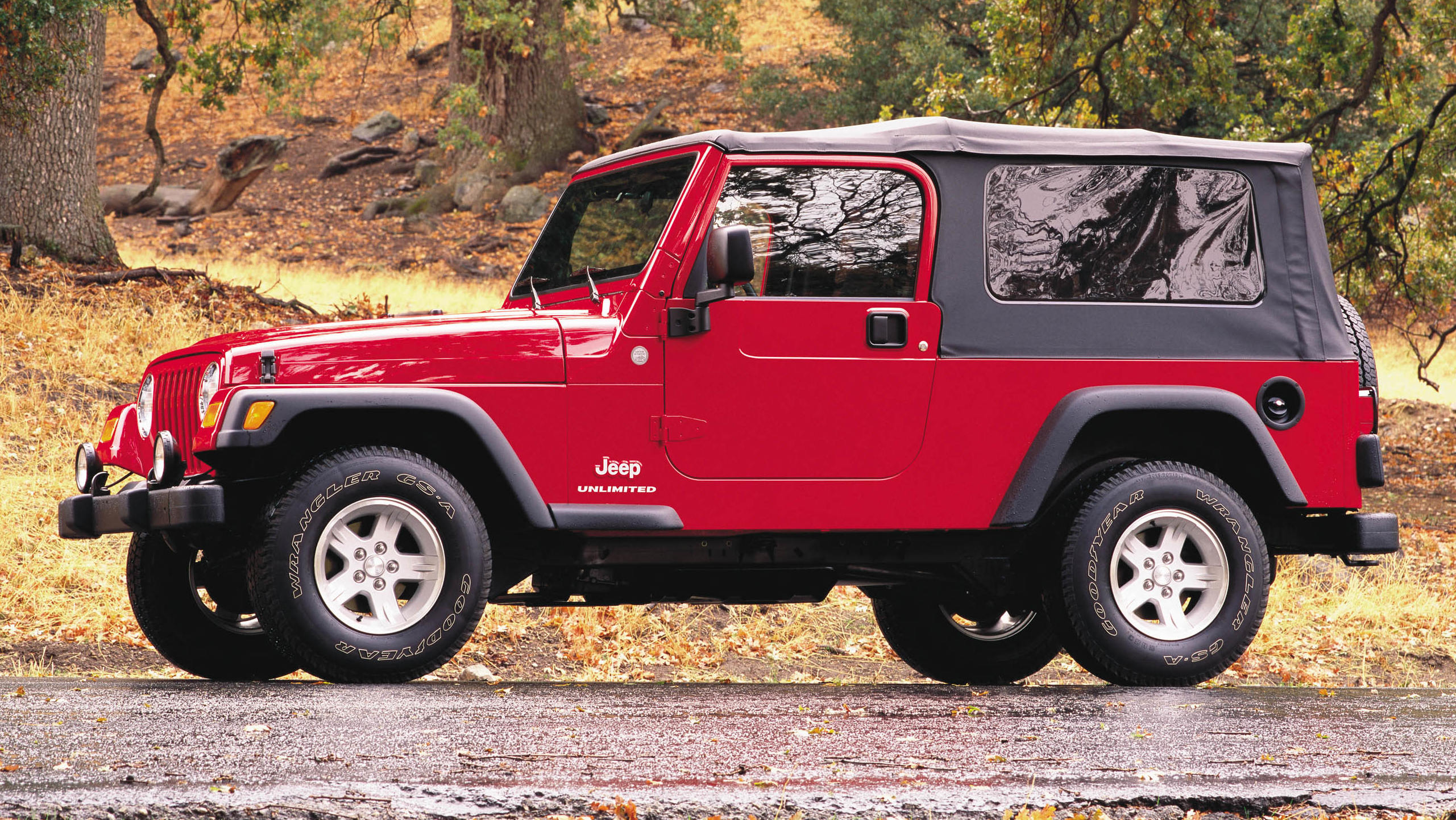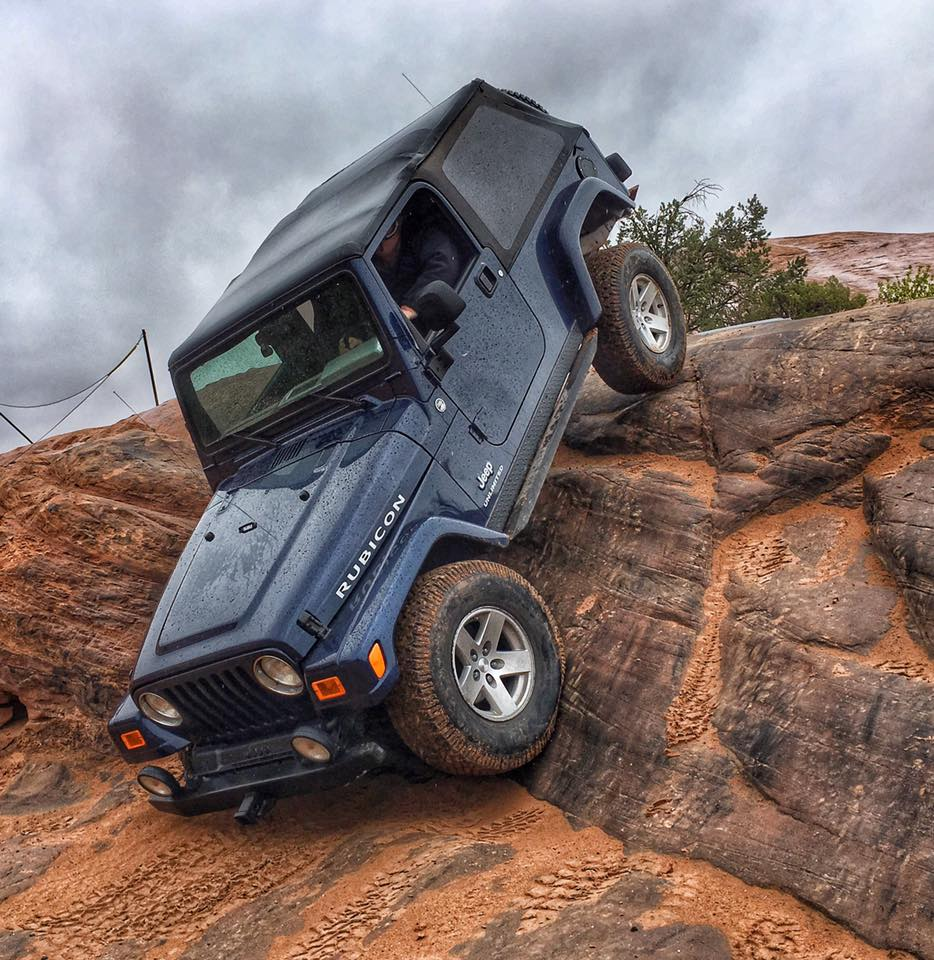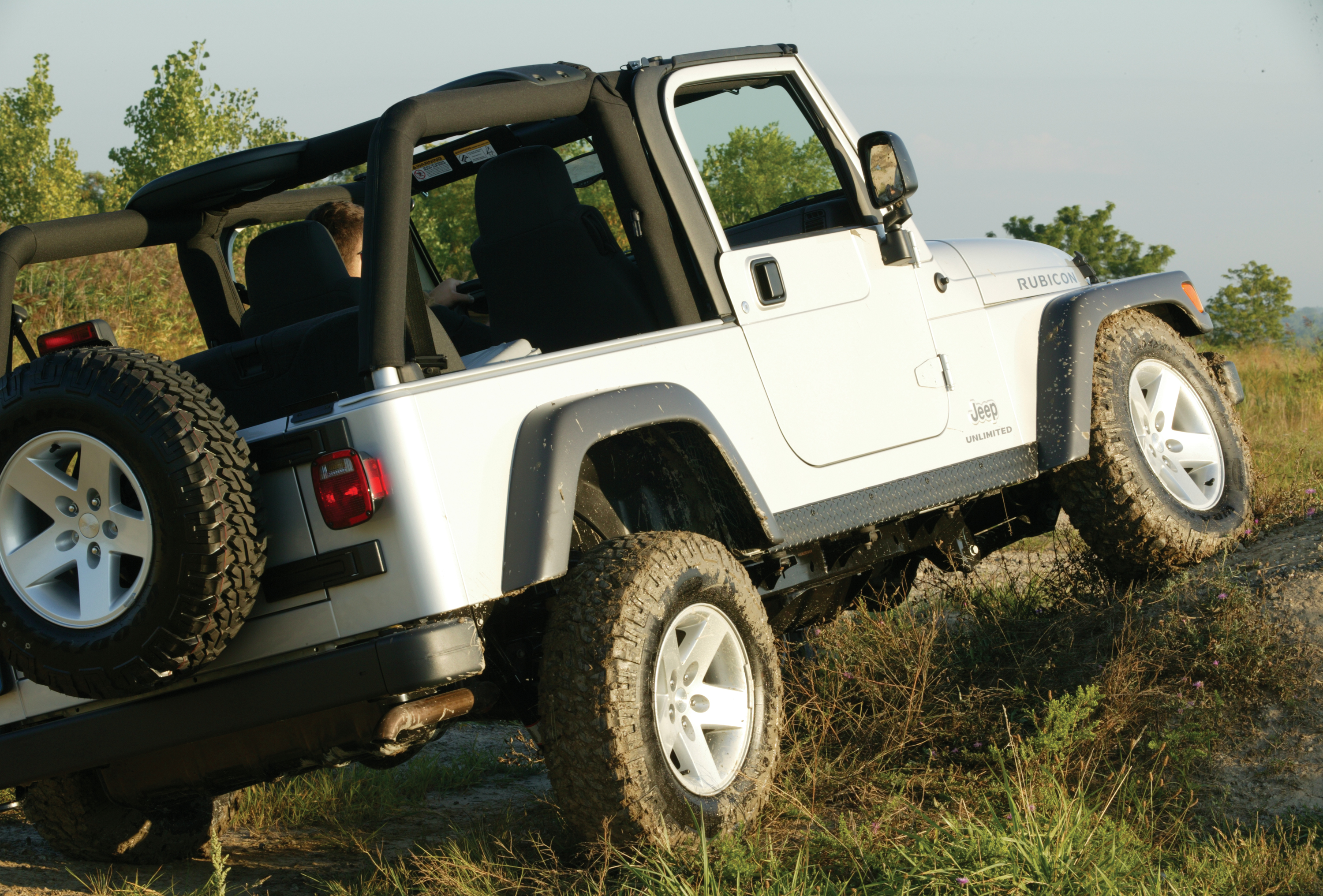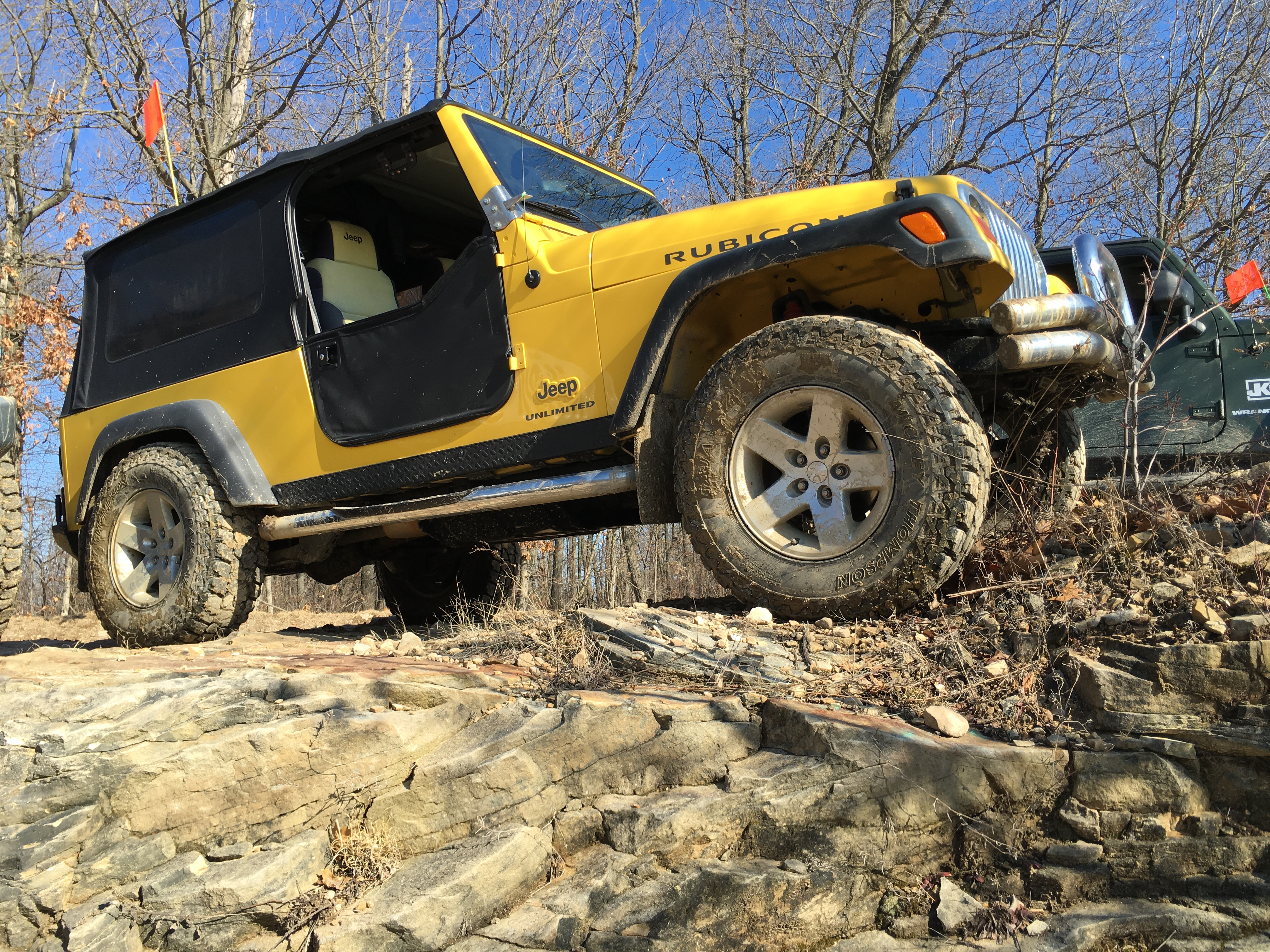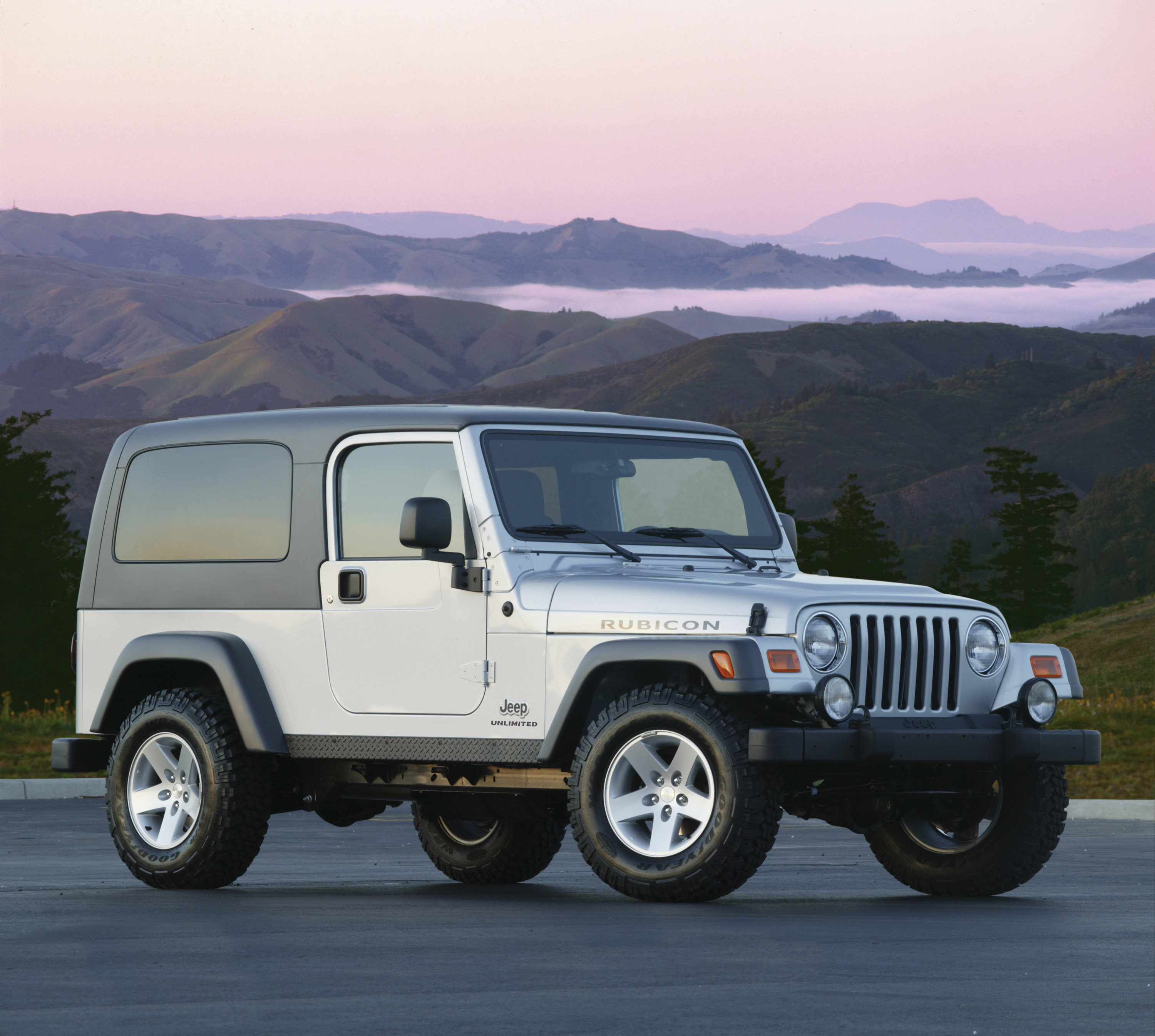Why The 2004 To 2006 Jeep Wrangler Unlimited 'LJ' Is The Holy Grail Of Jeeps
One of the most coveted Jeeps of all time is a relatively low-volume, stretched version of the regular 1997 to 2006-generation Jeep Wrangler.
We may receive a commission on purchases made from links.
One of the most coveted Jeeps of all time is a relatively low-volume, stretched version of the regular 1997 to 2006-generation Jeep Wrangler. It's called the Jeep Wrangler Unlimited. Let's look at how this elongated Wrangler combined key on-road and off-road traits to become a legend in the Jeep community.
In America's rockiest and muddiest off-road circles, the 2004 to 2006 Jeep Wrangler Unlimited is unanimously hailed as an icon. To find out why, I dug through lots of literature and interviewed owners and off-road experts. What I learned is that the first-ever extended Wrangler offered a blend of on-road versatility and off-road capability unmatched by any body-on-frame vehicle in the history of Jeep.
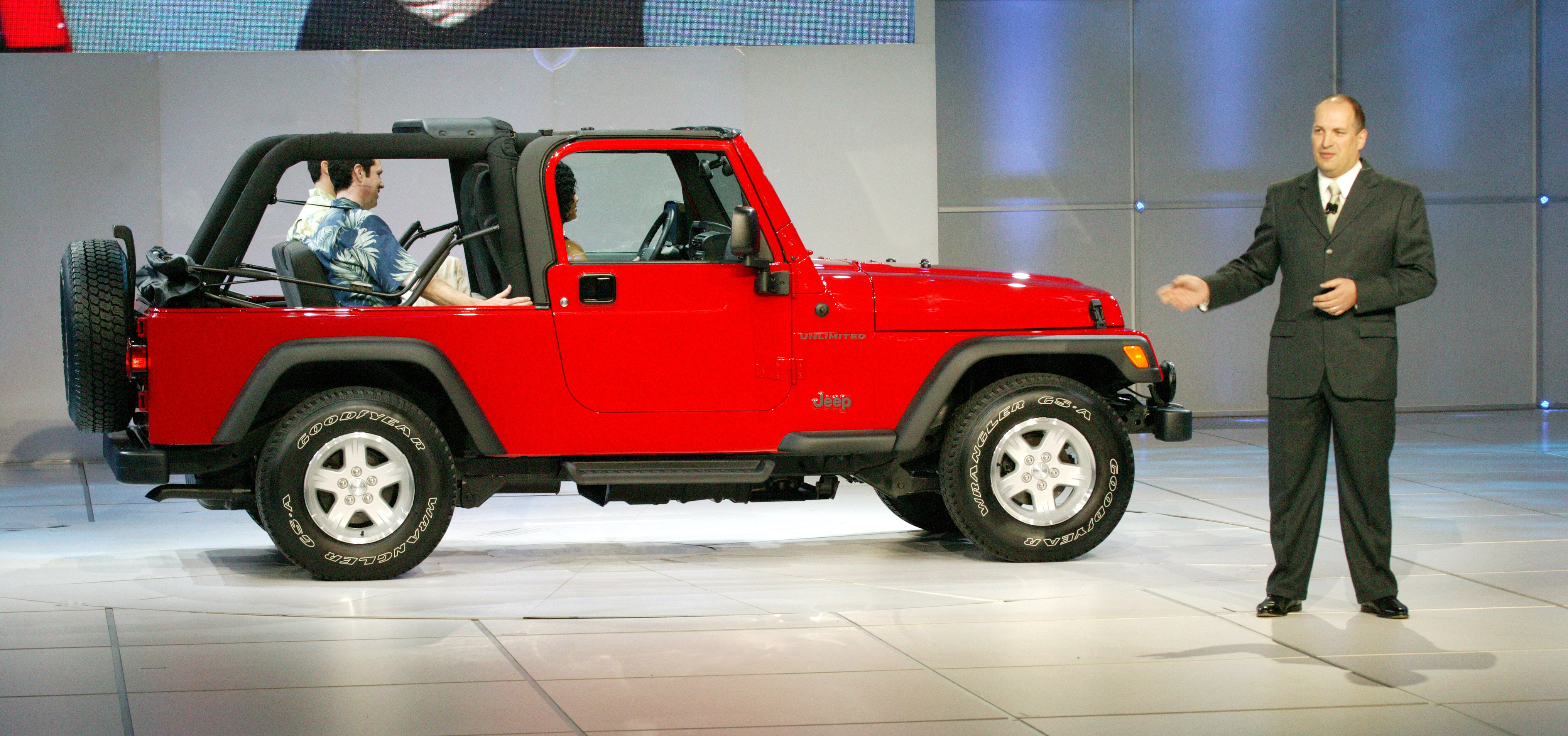
"New 2004 1/2 Jeep Wrangler Unlimited Gives Customers A New Choice," read the DaimlerChrysler (remember that?) press release from January 6, 2004. At the Detroit Auto Show, the company was launching a stretched version of its "TJ" Jeep Wrangler, which had debuted for the 1997 model year with round headlights replacing its predecessor's controversial rectangles, coil springs and a suspension similar to that of the first-gen "ZJ" Grand Cherokee taking the place of an antiquated leaf spring design, and lots of additional creature comforts.
The company could probably never have guessed at that time that this new stretched Wrangler would—despite rather modest sales—later become the holy grail of Jeeps for many diehards.
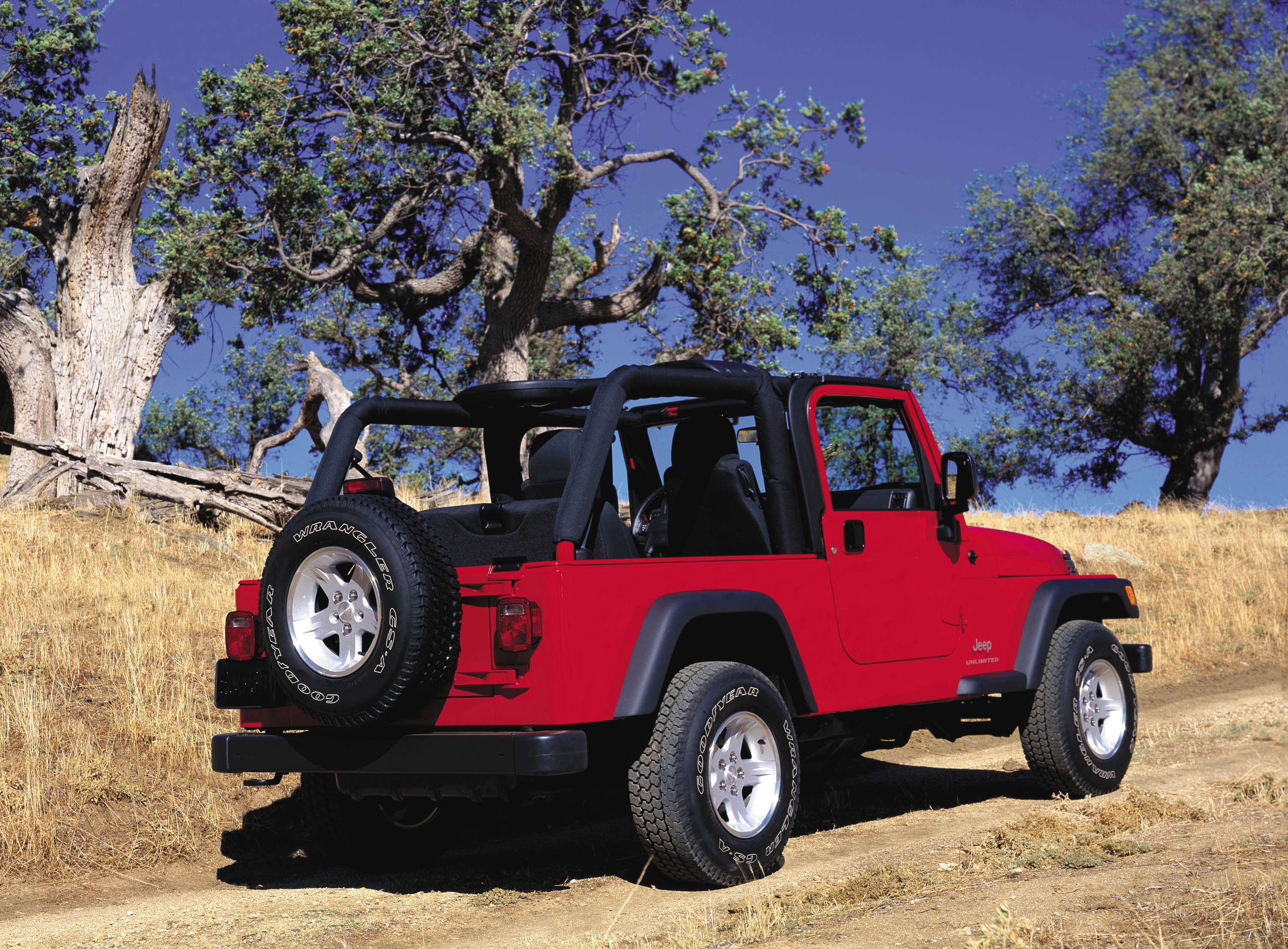
The concept of taking a short Jeep and offering a stretched model is a bit of a tradition. In 1956, Willys-Overland grafted 20 inches into the Jeep CJ-5's body and frame to form the CJ-6. For the 1976 model year, AMC launched the CJ-7, which was also a longer CJ-5 meant to accommodate an automatic transmission. And the 1981 CJ-8 is just a CJ-7 with an even longer wheelbase and rear overhang.
In the case of the new-for-2004 Wrangler Unlimited, Jeep added 15 inches of length to its stubby TJ Wrangler, 10 inches of which were in the wheelbase, and the rest of which made up the rear overhang. This setup, DaimlerChrysler wrote, yielded 13 inches of extra cargo length, doubling the short-wheelbase Wrangler's cargo capacity.
In addition, rear seat passengers got two inches of second-row legroom and a new "tip and slide" front seat to help with ingress and egress.
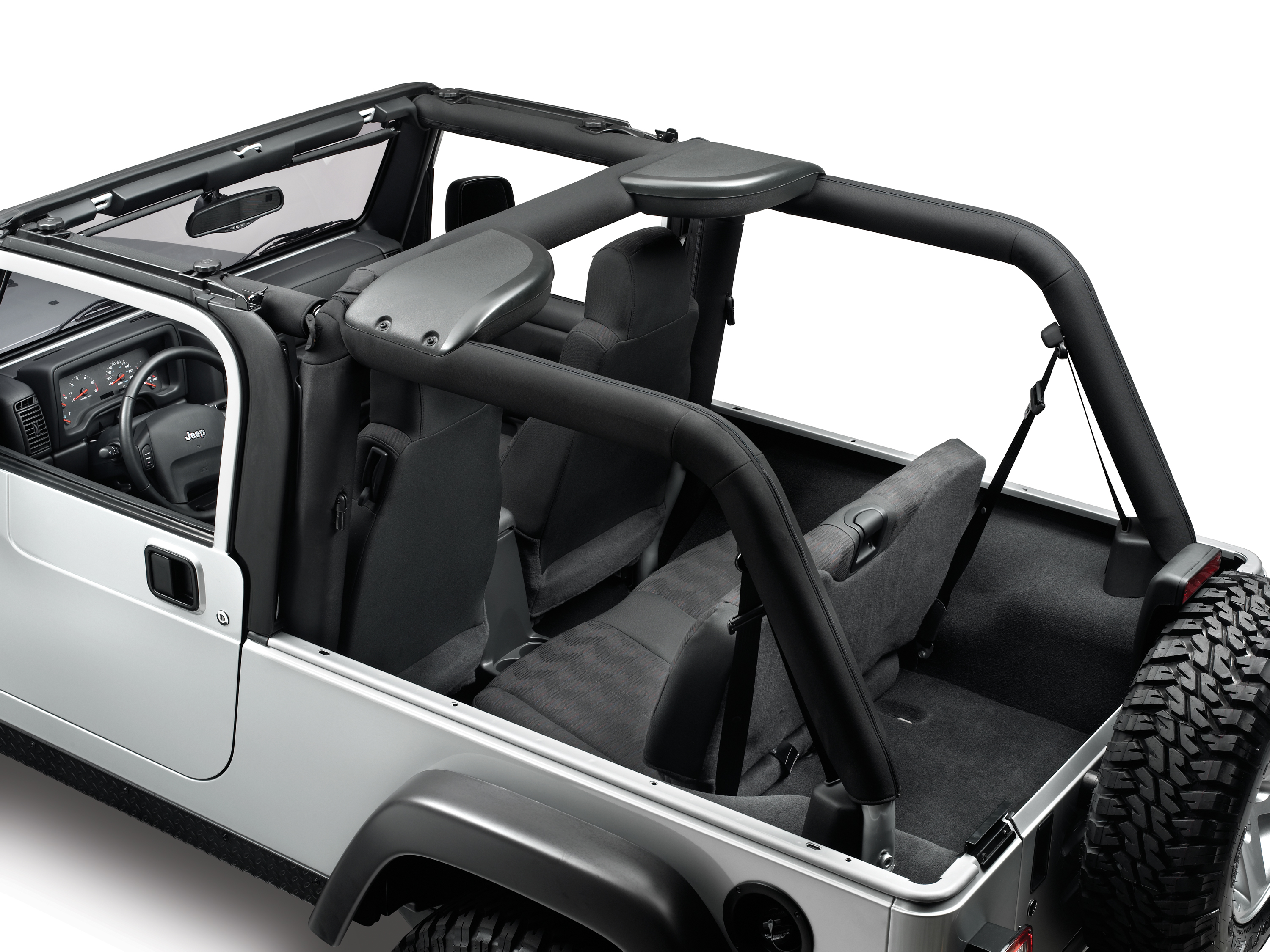
Here's what Jeff Bell, vice president of Jeep marketing at the time, said was the impetus for development of the new, more versatile stretched Wrangler:
....there is also a smaller group of Jeep owners who told us they would love a Jeep Wrangler, but needed more space for their lifestyle...We set out to create a longer wheelbase Wrangler that could give those customers what they really wanted, while maintaining the true fun and freedom of the original Jeep Wrangler.
The extra interior space was a huge selling point of the lengthened TJ Wrangler, but it wasn't everything. "We set out to create more space for cargo and passengers, but the increase in wheelbase also improves the on-road ride and towing capability of the Wrangler Unlimited," Jeep executive engineer Jaci Woody said in another January 6, 2004 press release.
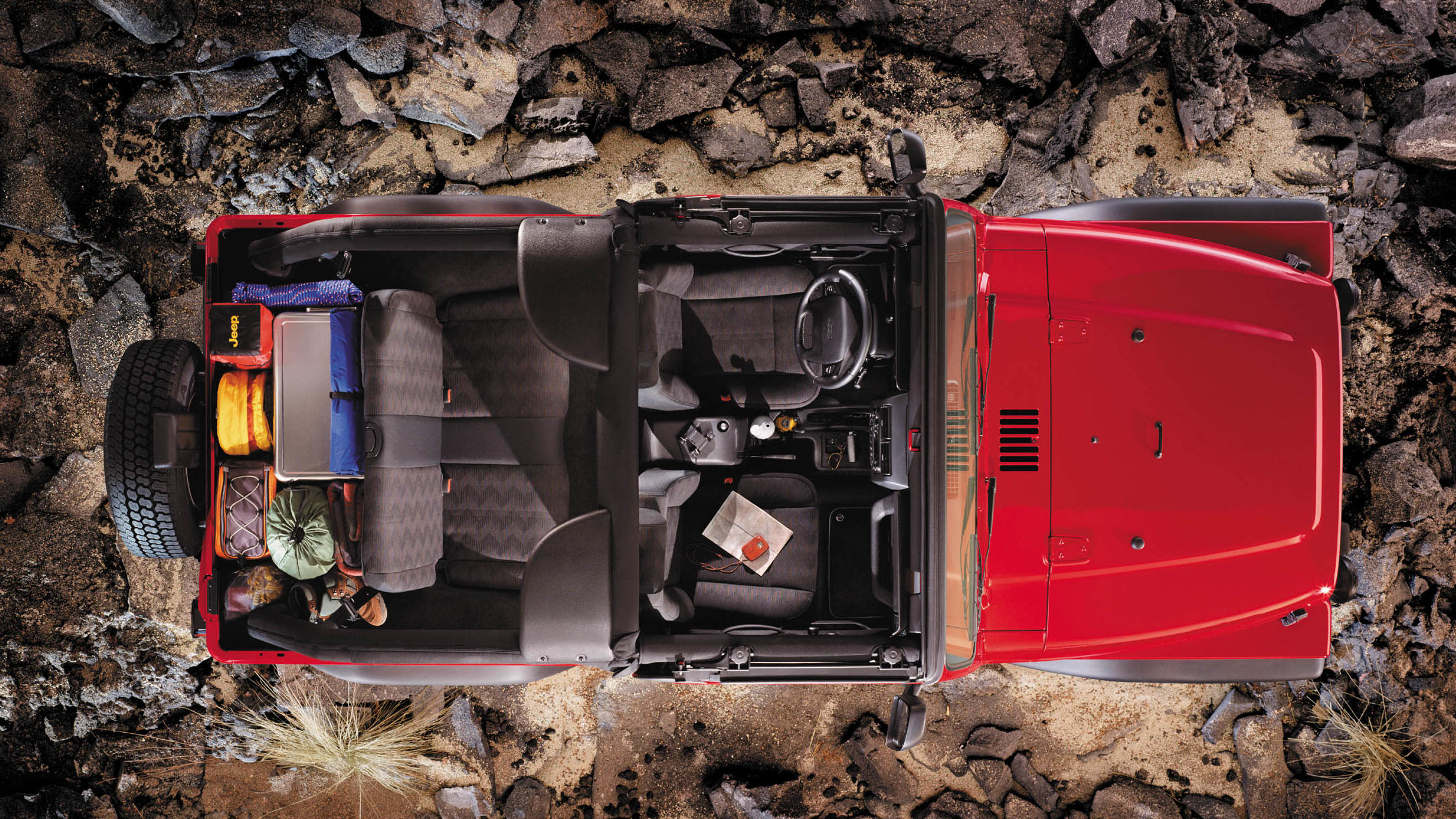
The standard Wrangler was only rated to tow 2,000 pounds, but the Unlimited—presumably due to the added stability resulting from its longer wheelbase and higher weight—could yank nearly twice that at 3,500. That's a significant increase for just a basic stretch job.
What's most interesting about the press release for the bigger, better-riding, heavier-trailer-towing "LJ," as it would later unofficially be named by Jeep enthusiasts (the term "LJ," it appears, originates from the fact that those two letters are found on TJ Unlimited body tags), is that despite its additional comforts over the base Jeep TJ, it's clear that in 2004, Jeep considered the Wrangler a recreational vehicle first and a daily driver second.
"The Jeep Wrangler Unlimited... will appeal more broadly to younger buyers and those who select this as their primary, secondary or third vehicle with the added versatility," Bell states in the introductory press release, before referring to the Wrangler as a "specialty vehicle."
You would never hear the terms "secondary or third vehicle" and "specialty vehicle" from the current Jeep Wrangler Unlimited's marketing team, in large part because of the influence of the "LJ's" successor, the first four-door Jeep Wrangler—the JK—which launched in April of 2006. That vehicle took the Wrangler from niche into the daily-drivable mainstream, and incredible production volumes prove that the move worked quite well.
But despite the hot sales, the JK four-door's aim to appease the masses with its even more voluminous interior came with compromises that have led many Jeep enthusiasts looking for a more practical Wrangler to ignore it, and instead crown the 2004 1/2 to 2006 Wrangler Unlimited, the "LJ," as one of the most desired modern Jeeps around.
The “LJ” Is The Perfect Size For Off-Roading
Much Smaller Dimensions Than the Four-Door As a general rule, when it comes to off-roading, small and lightweight is a recipe for success. More weight means more stress on a vehicle's components and more traction needed to accelerate up grades; and larger dimensions make navigating tight trails difficult. In these areas, the Wrangler "TJ" Unlimited is stellar, especially when compared to modern Wranglers.
The 2004 1/2 Wrangler Unlimited was under 70 inches wide (not including mirrors), 167 inches long, and 70.9 inches tall with the soft top. By comparison, its successor, the 2007 four-door Wrangler JK Unlimited (which set the foundation for the also-rather-large "JL" Wrangler of today), was roughly six inches longer, over five inches wider, about the same height, 13 inches longer in wheelbase, 3.4 inches wider in track width, and over 350 pounds heavier.
This isn't surprising, as, again, the JK Unlimited was marketed as a more mainstream, livable Wrangler right out of the gate. In fact, the press release for the JK shortly after it debuted in 2006 included this quote from the vice president of the body-on-frame team, Mike Donoughe: "Whether it's used as a daily driver or for extreme rock crawling, Jeep Wrangler Unlimited has the ability to turn mountains into mole hills, while comfortably carrying passengers and storing gear."
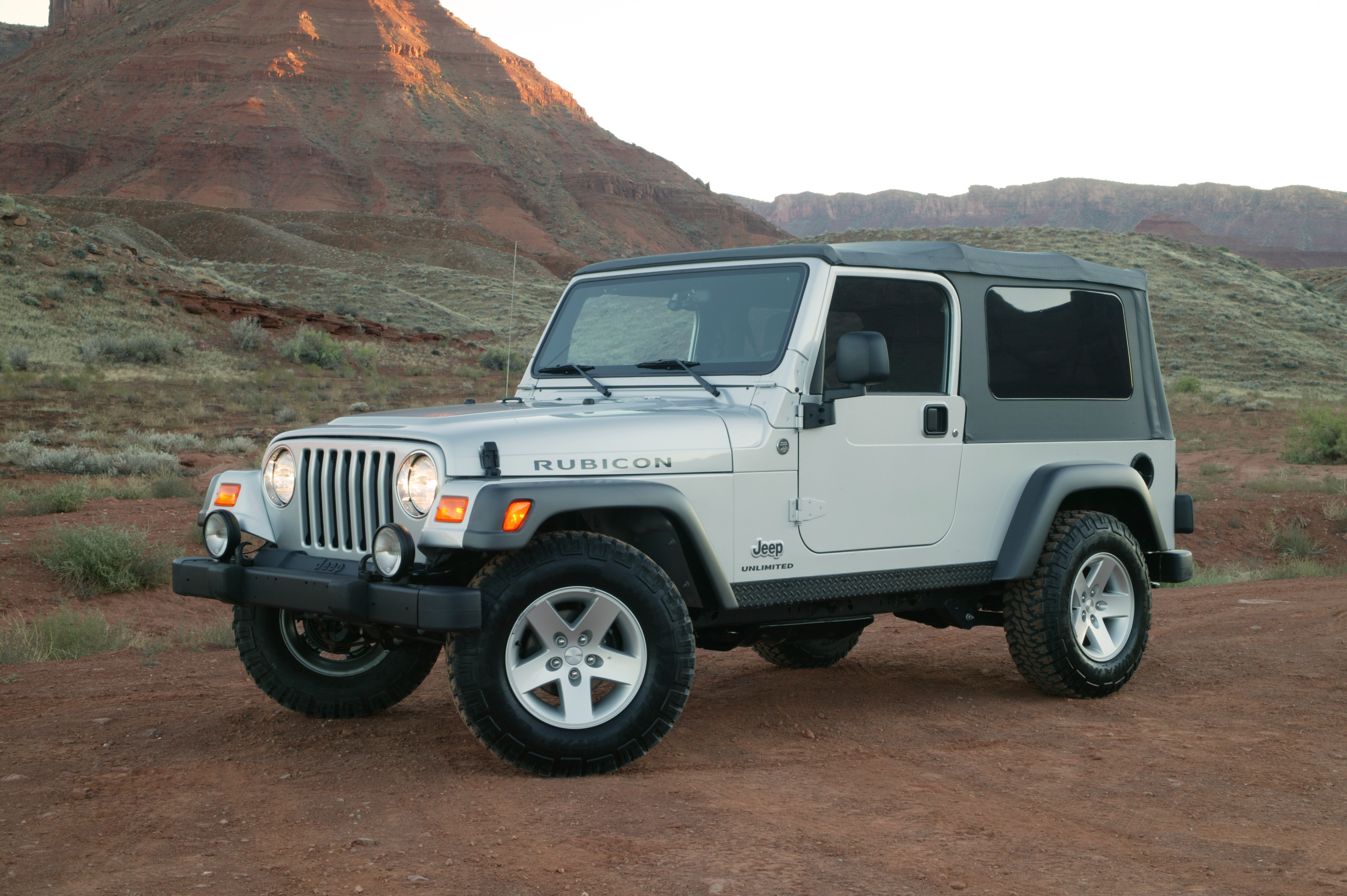
There's no mention of "specialty vehicle" or "secondary or third vehicle" in the copy, but the very first sentences get straight into passenger space and cargo volume. That's what the JK (and, by extension, the modern JL) was all about, and while that's great for going to the mall, it's not great for off-roading. The vehicle's added length and width made navigating small two-track trails more difficult, and the 13 inches of extra wheelbase over the TJ Unlimited meant it often ended up a beached whale when it tried to crest hills.
The TJ Unlimited wasn't perfect, either, with its large rear overhang that yielded an unimpressive 27.7 degree departure angle, but at least its 21.4 degree breakover angle beat that of the base four-door JK's by more than 3.5 degrees, and even edged out the Rubicon trim Wrangler Unlimited JK by over half a degree. And that's even with the TJ's belly hanging oddly low thanks to its giant transfer case skid plate (I'll get to that in a bit.)
A Longer Wheelbase Than The Short TJ Is An Advantage
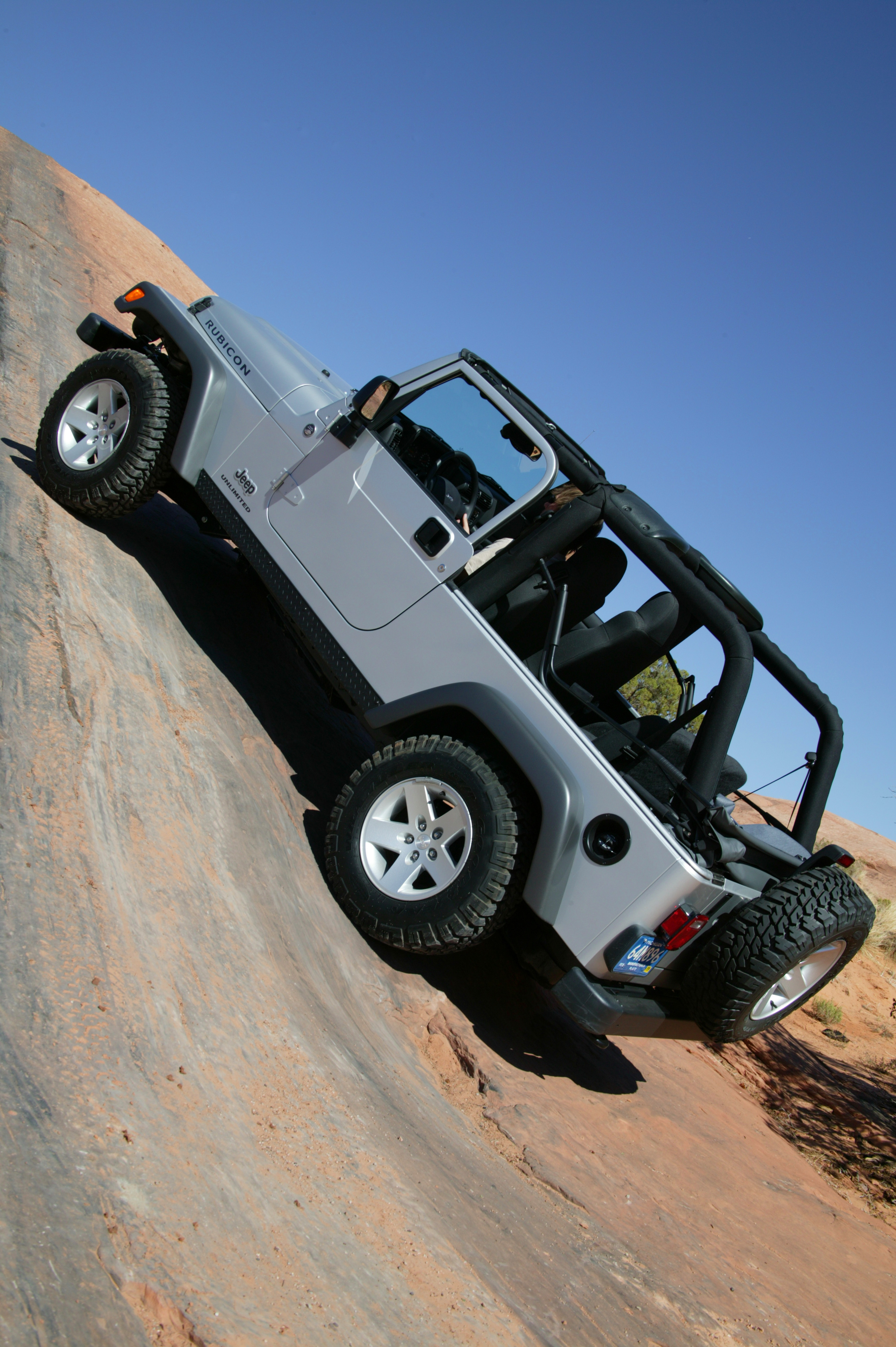
But tying a vehicle's geometry and weight together is the location of its center of gravity relative to the wheels—a critical metric, especially when climbing steep grades.
Hop onto YouTube, and it will take no time to find a jacked-up short-wheelbase Jeep Wrangler doing a backflip as it attempts to climb a slope. Just look at this:
In order to get the ground clearance they want, owners lift their Jeeps and install 35-inch or larger tires. The issue with doing this on a short-wheelbase Wrangler is that, when climbing a steep grade, there's a lot more load transfer to the rear, which ends up "lightening" up the front end.
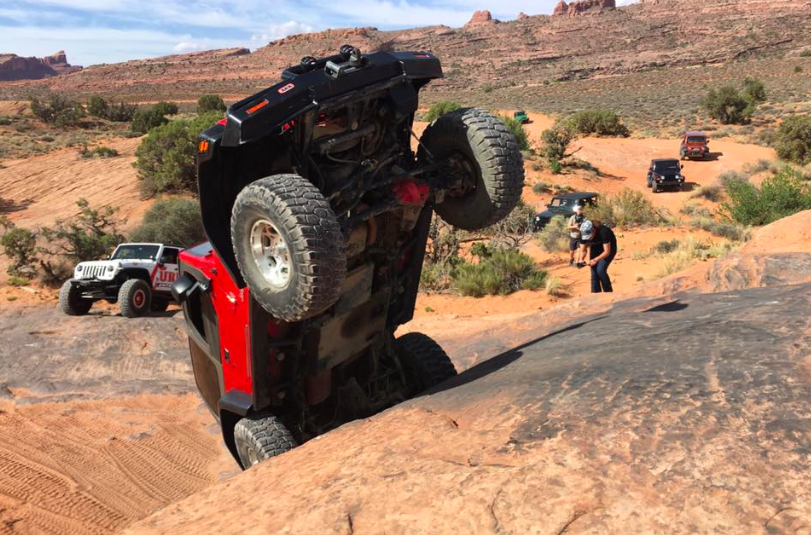
As with a drag car, if you increase the wheelbase, you reduce load transfer, and the normal force at the rear contact patch has a larger moment arm about the center of gravity, and is thus better able to counteract the moment created by the thrust vector between the tire and the ground, helping to avoid flipping.
Similarly, if you decrease the vehicle ride height and thus drop the center of gravity, the thrust between the ground and the tire has a smaller moment arm to cause the vehicle to rotate about its Cg. So a low vehicle with and long wheelbase is key to climbing steep grades and avoiding flipping.
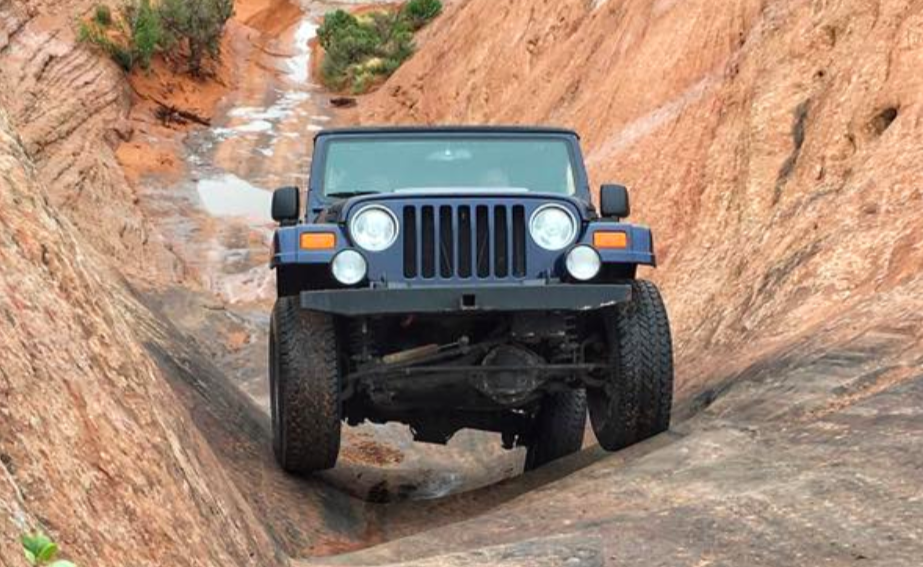
At a certain incline angle, the car's weight vector (acting through its center of gravity) will point aft of the rear tire contact patch, and there will be no forces to counteract the moment. Even if the driver lets off the throttle and there's no longer a thrust between the terrain and the tire, a "tip condition" has been reached. The Jeep will fall backwards. With a longer wheelbase, the center of gravity is farther forward relative to the rear contact patch, and a larger incline angle is needed before such a tip condition occurs.
That said, if you accelerate hard enough on a vehicle lifted tall enough up a grade that's steep enough, even the coveted long-wheelbase "LJ" can lift its front tires, as shown below:
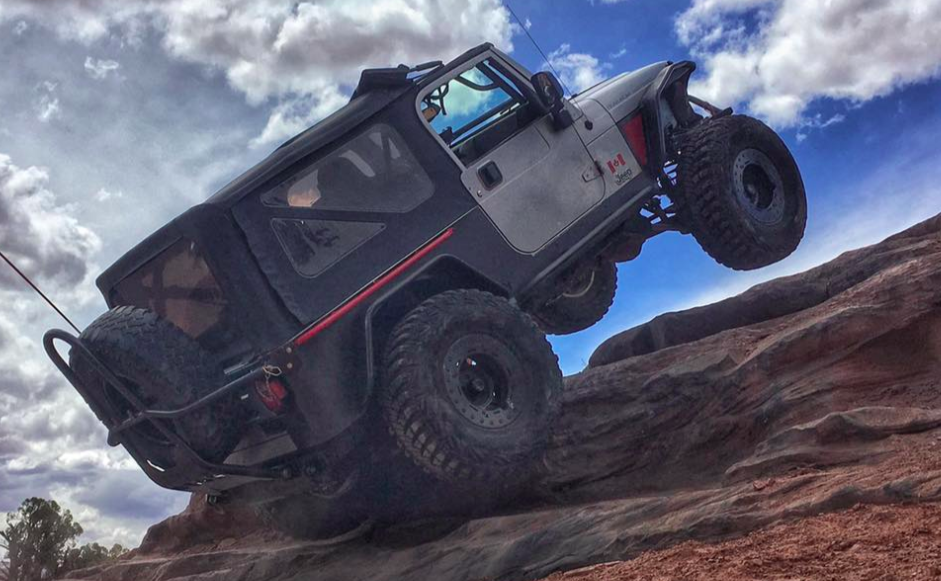
Backflip-avoidance is a major benefit of the TJ Unlimited over the smaller TJ, but, relatedly, so is traction up inclines. I'll admit that I don't really know the exact physics behind why it's the case, but it's common knowledge in the off-road community that, even when tipping isn't likely to happen, longer wheelbase vehicles simply manage to achieve better traction up grades.
Part of that, I bet, has to do with a higher likelihood that the front and rear axles experience disparate grip levels at a given time. For example, imagine you've got a slick section of a grade that's as long or longer than your wheelbase. In that case, all four tires will have to deal with the slick terrain, and the vehicle may not make it up. But if the wheelbase is longer than the slick section, two tires will struggle on the slick surface, while two with grip yank the vehicle up the obstacle.
In addition, if a steep slope of a given angle has a length that's shorter than a vehicle's wheelbase, the Jeep will never find itself at the slope's true angle, since the rear tires will be on flat while the fronts are on the slope, and by the time the rears get on the slope, the fronts have topped out. Thus, the angle of the incline, and thus the load transfer to the rear tires, has been effectively reduced.
Speaking of load transfer, that's something that you generally want to avoid with a four-wheel drive machine because of a concept called "tire load sensitivity." That states that the "rate at which grip increases with vertical tire load drops due to that drop in friction coefficient." So, traction looks like this as load increases:
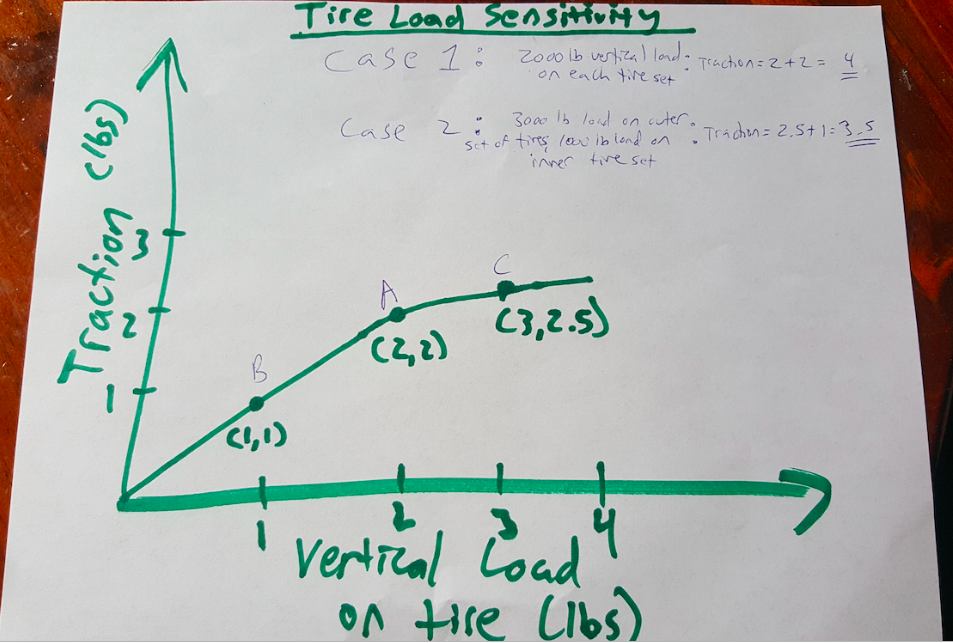
What this means is that ideally, you'd have all four tires loaded up the same, since as load transfer occurs, the tires being loaded gain less grip than the two tires being unloaded lose. Thus, the net grip decreases.
How much tire-load sensitivity comes into play on a loose off-road surface, I'll admit, I'm not entirely sure. Off-road vehicle dynamics is admittedly not my expertise, but intuitively, it's easy to understand why you'd want all four tires to contribute traction up a grade, and not just rears.
Still, I'm sure one or some of these explanations on how a long wheelbase reduces tipping and improves traction factors into why Formula Offroad hill-climb cars have tires pushed all the way to the vehicles' corners.
It Came With Great Off-Road Hardware
Even the base Jeep Wrangler LJ came with a Dana 30 front axle, limited slip differential-equipped Dana 44 rear axle (not the much-maligned, highly breakable Dana 35 found on the standard Wrangler), and short 3.73 gears. The base transmission was a 42RLE four-speed slushbox, which seems to be regarded as just fine, though in 2005 came the NSG 370, a Daimler-sourced six-speed that gained its notoriety as the decently beefy but unrefined transmission standard in the heavier JK Wrangler four-door.
The Rubicon "LJ," offered in 2005 and 2006 only, added a Dana 44 axle in the front, 4.10:1 axle ratios for better torque at the wheels for maximum crawl-ability, front and rear air-lockers, a 4:1 low-range transfer case, and stock 31-inch Goodyear all-terrain tires that added half an inch of ground clearance over the base "LJ."
On top of all that, under the hood was the unkillable, torquey 190 horsepower, 235 lb-ft 4.0-liter straight six. In other words, no matter which "LJ" you bought, you had the hardware to do some serious off-roading.
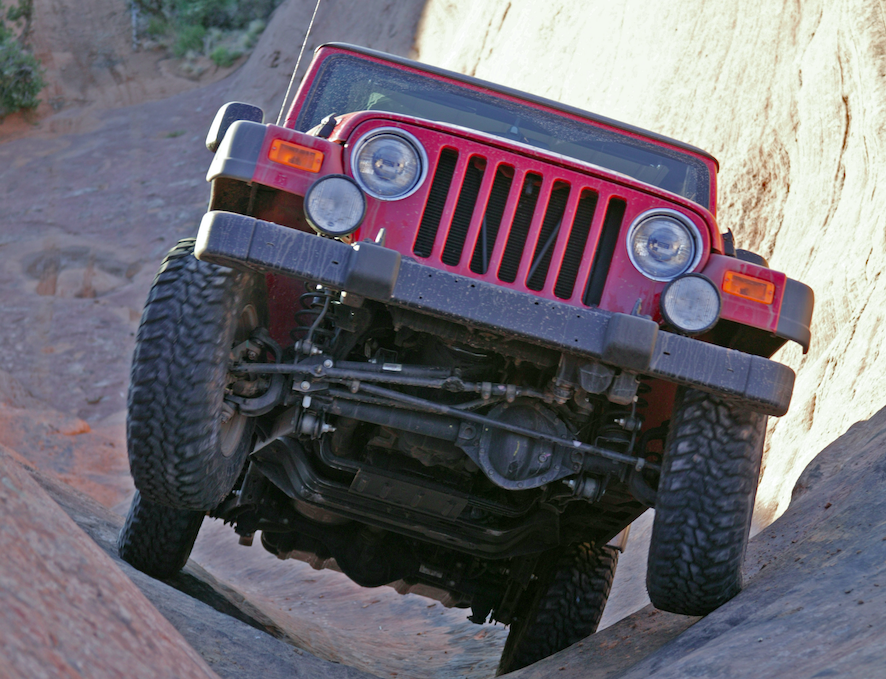
To learn more about the LJ's off-road prowess, especially as it relates to being a platform for modifications, I called up the product planner for the modern Jeep Wrangler JL, my friend Tony Carvallo. He's a true off-road expert who now works for the axle company Dynatrac, and actually owns the "LJ" you see below.
While at Jeep, he built a number of hard-core off-road Jeep concept vehicles, and more recently, he worked with Dynatrac and Fred Williams at Dirt Every Day to build the JL-based Code1 off-road machine, which was inspired by Tony's long-standing love for the TJ Unlimited.
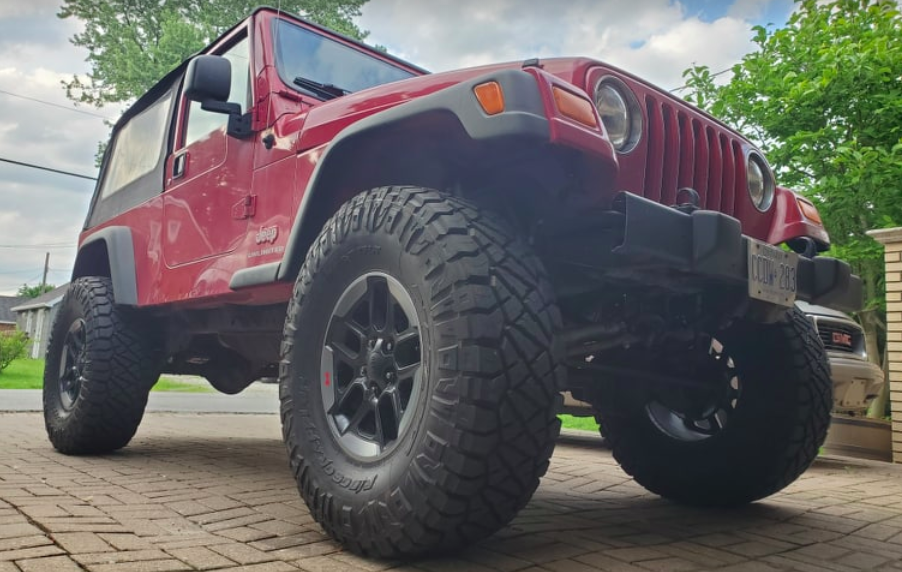
"The canvas of [the "LJ"] is ideal in my personal perspective," he told me over the phone. "The [fully boxed] frame is longer and able to be welded and cut and adjusted and you can put coilovers on that thing, you can weld brackets to it pretty easily," he said, going on to iterate multiple times just how easy it is to adjust the frame to one's liking.
Even in stock form, he has love for the LJ, saying he prefers it to the JK because the JK two-door is too short for hill climbs and the four-door isn't nimble enough. "The 'LJ's' wheelbase was amazing because if you put larger tires on it, it becomes like a Swiss army knife," the off-road addict told me. "You could really do a lot of different things. You're maneuverably between trees...and at the same time, you're at the sweet spot where you can actually climb rocks and move up on stuff very easily."
But Tony's true desire, and his plan for his own LJ, is to use the LJ as a basis for a build that involves actually pulling the rear axle back in the vehicle to increase the wheelbase even more. "The LJ lends itself nicely to be stretched. And that's the allure that I had," he told me. "If you stretch the back a little bit with a long-arm lift kit, you now have all the departure, [approach] numbers are amazing, and then you get a wheelbase that can be bumped up."
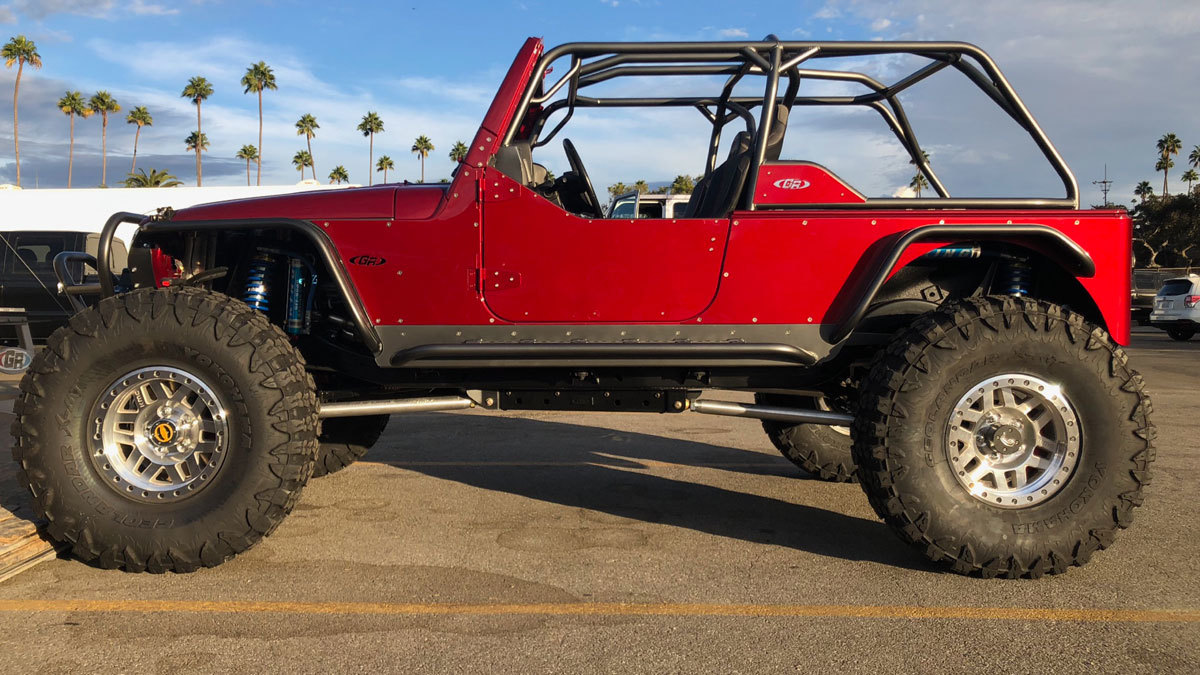
Tony pointed me towards a company called Genright, who actually sells the suspension kit you see above, which the company advertises "Stretches the wheelbase from 103 [inches] to 115 [inches]." As shown, the approach and departure angles are phenomenal, while the wheelbase is still a bit shorter than that of a JK Unlimited. Kits like these, especially ones that keep the wheelbase around 110 inches, Tony says, let LJ owners "optimize [the vehicle] to its peak potential."
"An LJ, adapted and altered with these aftermarket components kinda brings it back to this amazing 'sweet spot,'" he told me, with a clearly passionate tone about this 2.5 model-year-only jeep.
Tony admits that there's no combination of features that will make a vehicle the best at every type of off-roading. But, he says, "What's wonderful and amazing about the 'LJ,' is that you can get it so close to being really damn good at almost everything."
"That transfer case is amazing... it can handle a V8 power conversion," he said, and "You're long enough that you can bomb in the desert pretty quick," referring to how an increase in wheelbase tends to reduce vehicle "pitching." Plus, the coil springs, not offered on any other body-on-frame Jeep prior to the TJ, make the vehicle handle and ride so much better than a leaf-sprung Jeep, especially in high-speed off-road terrain.
In some ways, Tony says the "LJ" takes all the attributes that make the beloved XJ Cherokee such a great all-rounder, but then adds a highly-modifiable, more durable ladder frame.
Why Owners Love Their LJs
I've got a bunch of friends with LJs, so I called a few of them up to see why they love their machines. First I talked with my buddy Steve, who has taken his off-roading to Moab and also drives it daily.
While he said the wheelbase helps the machine feel more comfortable on an incline than his short-wheelbase CJ-7, Steve's main focus was on creature comforts, since he has to use his Jeep to get to work everyday.
"I love the fact that it rides a little bit more settled than a regular TJ. It's less 'snappy' on the freeway," he told me. Continuing the discussion on daily-drivability, Steve mentioned how he was able to fit a bunch of shelves in the back of his LJ. "It's got a ton of space in the back. It's just more useful...It just fits more situations," he stated.
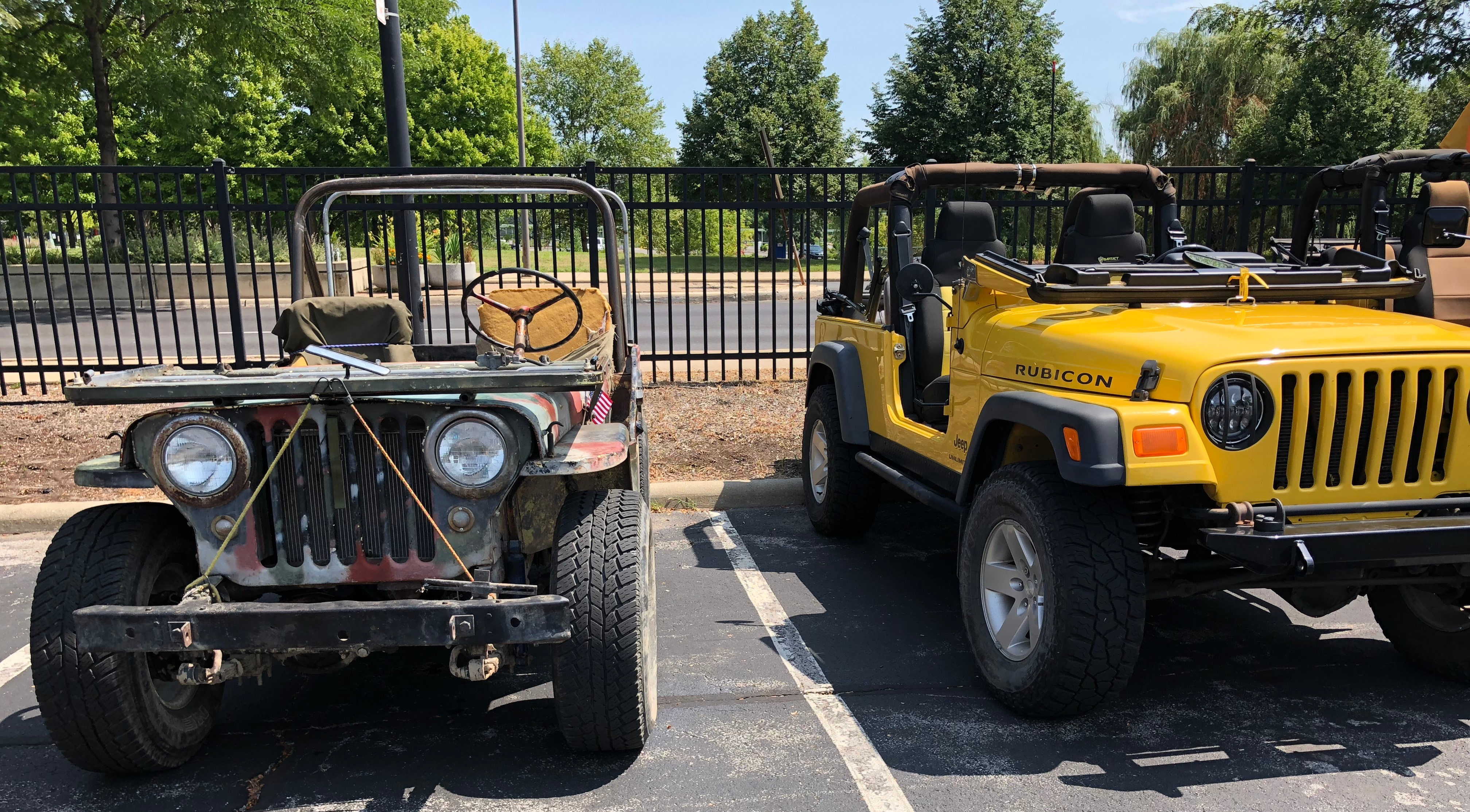
I also spoke with Jalopnik reader John, who goes by the Kinja username "Just Jeepin'." That's his yellow LJ in the pictures above.
"Most people don't know the LJ exists, much less the holy grail," he began. John said he'd been researching Jeeps for a while, and at the time he had a remote job, and wanted to tow a travel trailer. The stock TJ's tow rating was too low, so when he learned that the TJ Unlimited could yank 3,500 pounds, he was "off to the races."
But it was more than just towing capability; aesthetics played a role, too, with John calling the two-door look "classic," and the larger JK's front end a bit "boring" and "flat." I agree with him, there.
He calls the LJ "a good combination of design, comfort, [and] livability," citing its coil springs, beautiful round headlights and gorgeous front grille, its interior space, and its easy-to-work-on 4.0-liter engine.
John has no shortage of complaints about his LJ, saying he's spent thousands on axle, engine, and electrical repairs. Plus, he says the turning radius isn't that great. On top of that, both he and my friend Steve mention the awkwardly low-hanging transmission cross member, which many LJ owners lift up in what's called a "Tummy Tuck." Still, John concludes, "after all these years, it still sits in that sweet spot."
The LJ May Always Be The Greatest
When the LJ came out in 2004, it cost $24,995, sitting between the short-wheelbase Sahara and Rubicon. That's about 35 large in today's money according to the Bureau of Labor Statistics' CPI Inflation calculator. While that may seem like a hefty sum, LJs—even rough ones—are still damn expensive today.
"It has been a dream of mine forever to own one. The only problem was, they're worth $15,000, and that's crazy to me for an old used car," Tony told me during our interview. He's right; hop onto your local car listings, and you'll see that 2004 to 2006 Jeep Wrangler Unlimiteds, especially ones with low mileage, command a heavy premium over the short wheelbase models.
That's no huge surprise, since love for the "LJ" really didn't take off until after the vehicle left production, which—according to what I found on forums—totaled a modest 47,000-ish over its short 2004 to 2006 model-year run, representing only about 20 percent of total Wrangler sales over that span.
And yet the obsession continues, with aftermarket companies offering stretch kits to get short Wranglers closer to the LJ's optimal wheelbase. For example, Genright sells stretch kits for short TJs, advertising that the package "is also good for up to a 5" rear stretch and a 3" front stretch to get your Jeep to the 'Magic 100' wheelbase." Another company showed off a stretched two-door JK in 2015, calling its vehicle the "Dual Sport 106," named after its improved 106-inch wheelbase (The same as the LJ).
It's clear that the love for the LJ remains strong thanks to its incredible combination of good interior space, small exterior dimensions, low curb weight, excellent wheelbase for a variety of off-road conditions, robust powertrains and drivetrains, ease of modification and good aftermarket support, decent ride quality, and gorgeous aesthetics.
And with the success of the four-door Wrangler, it's hard to imagine that Jeep will bother offering anything like it again, meaning the LJ could forever remain a coveted prize among Jeeps.
